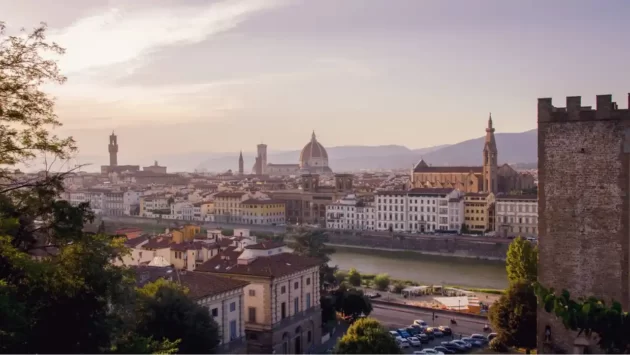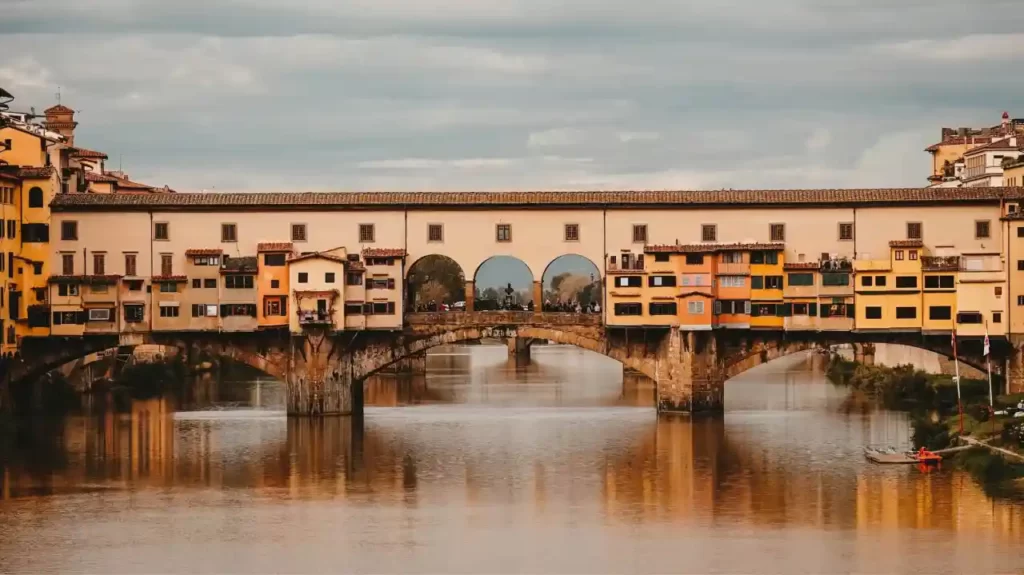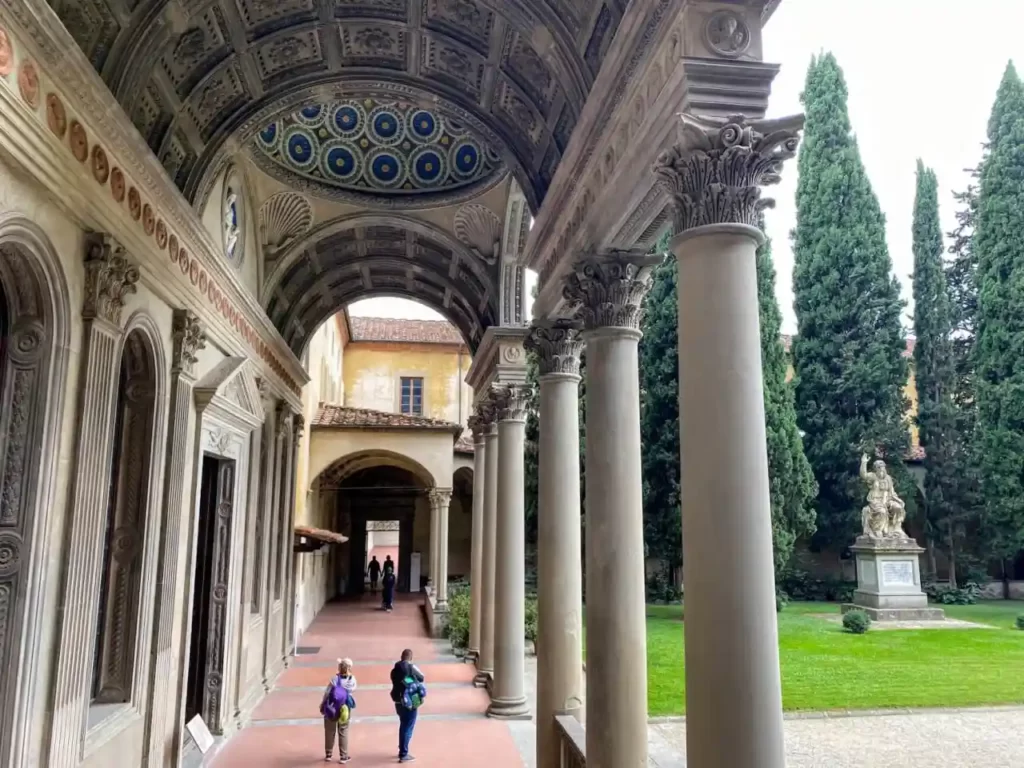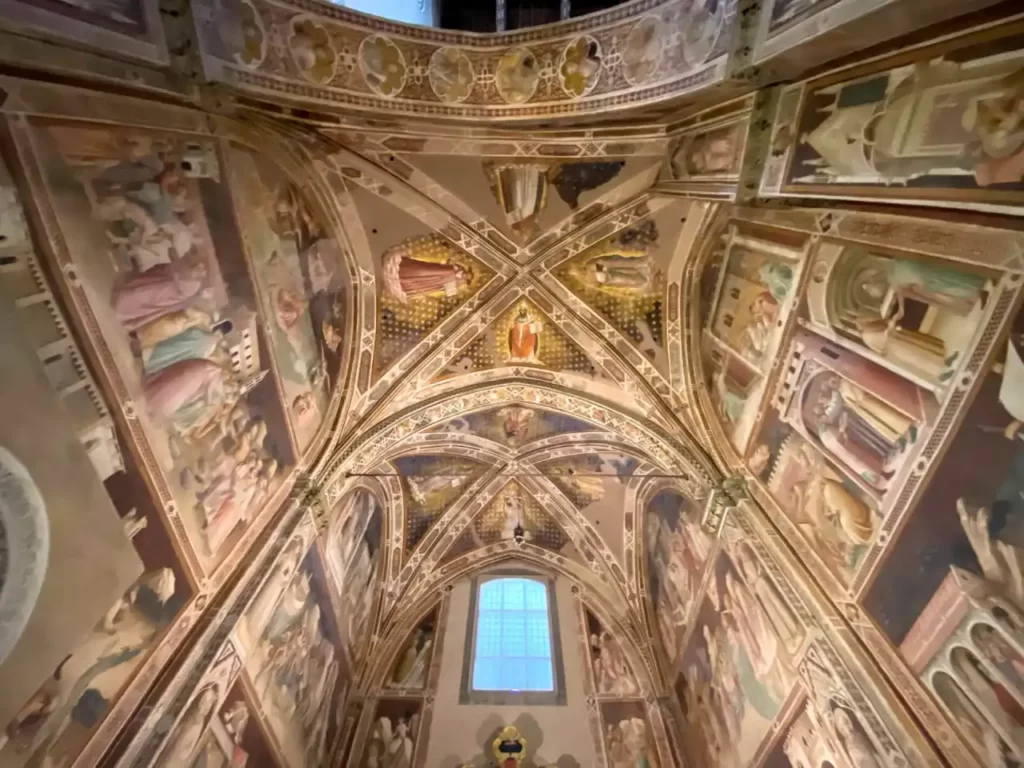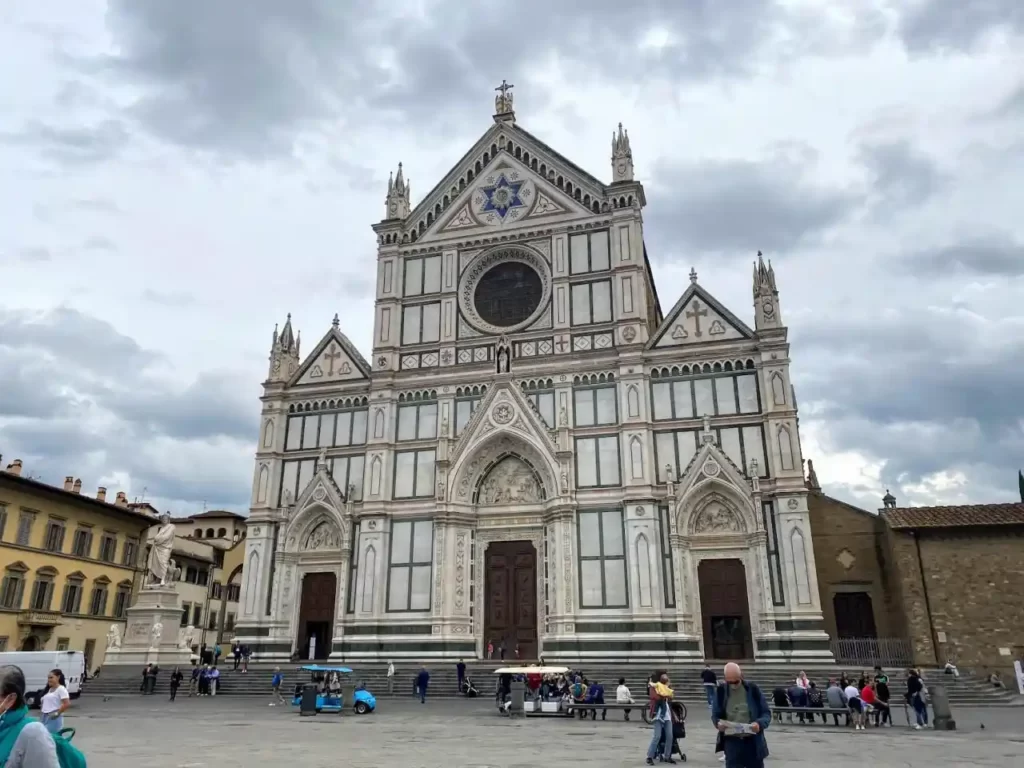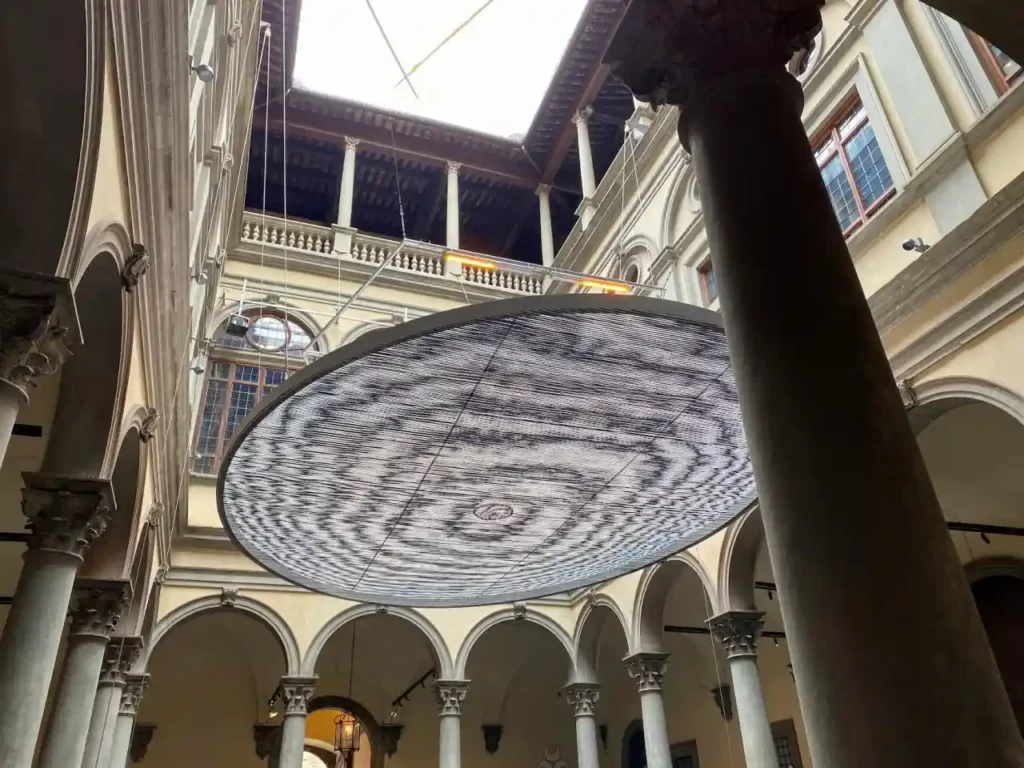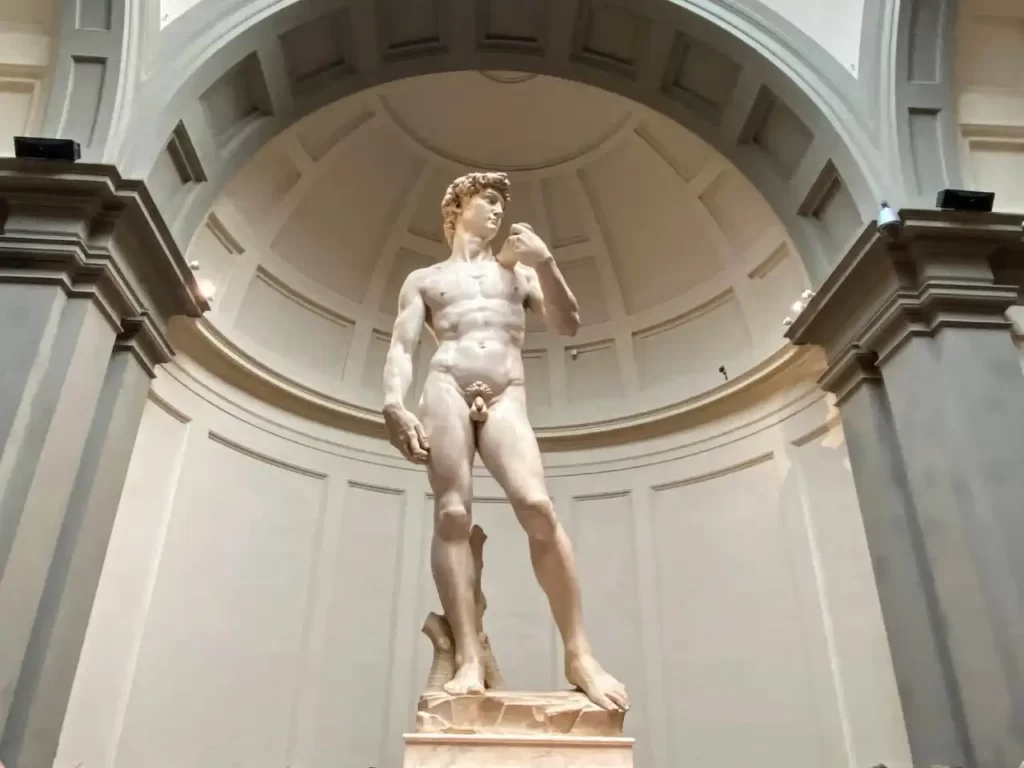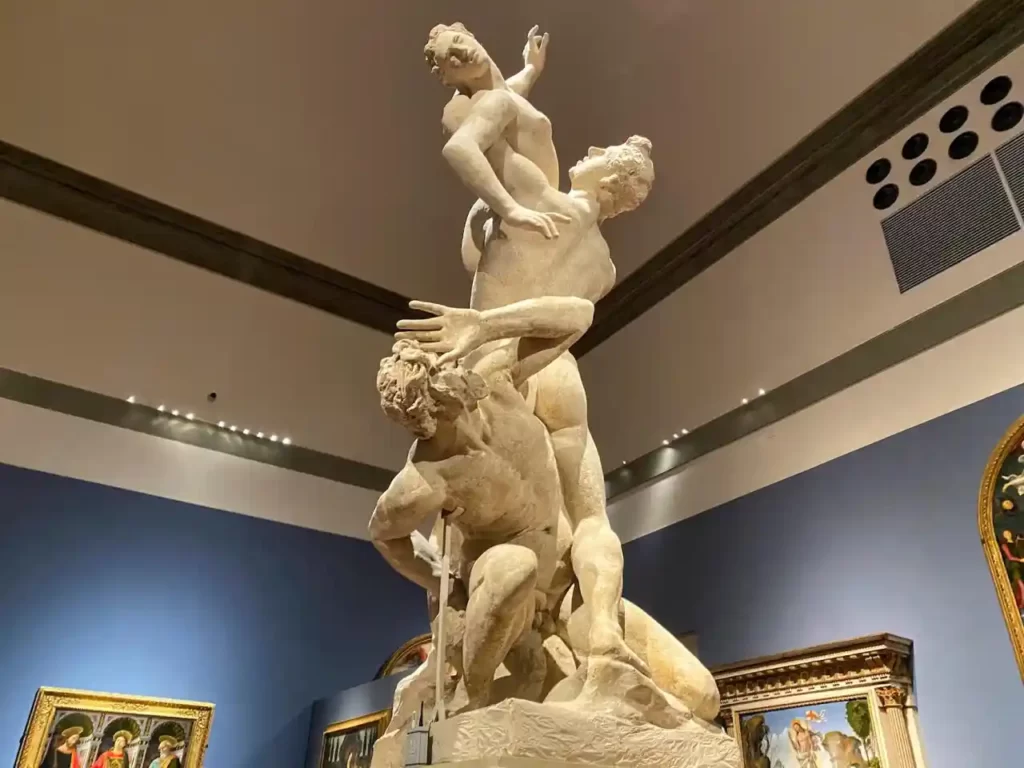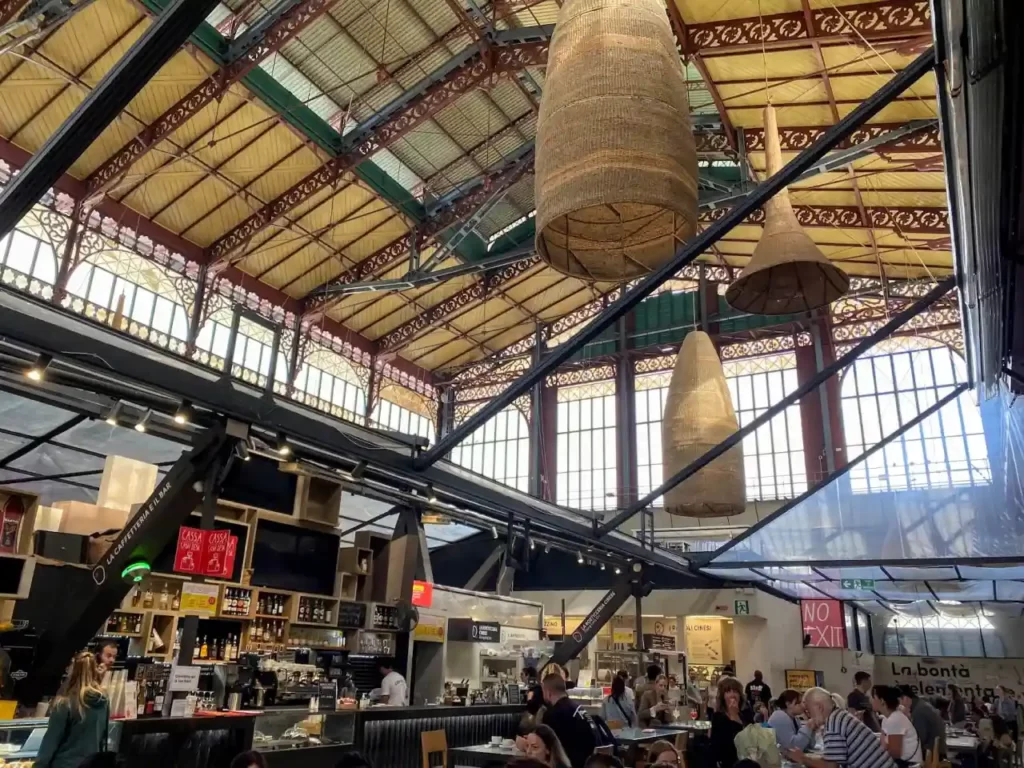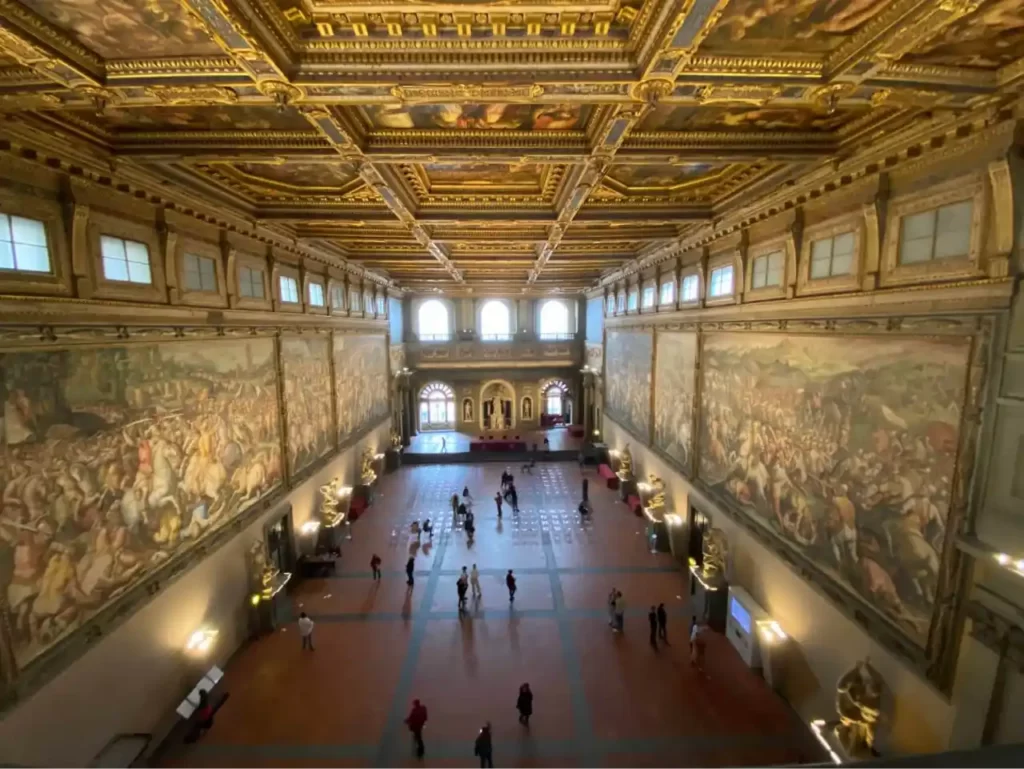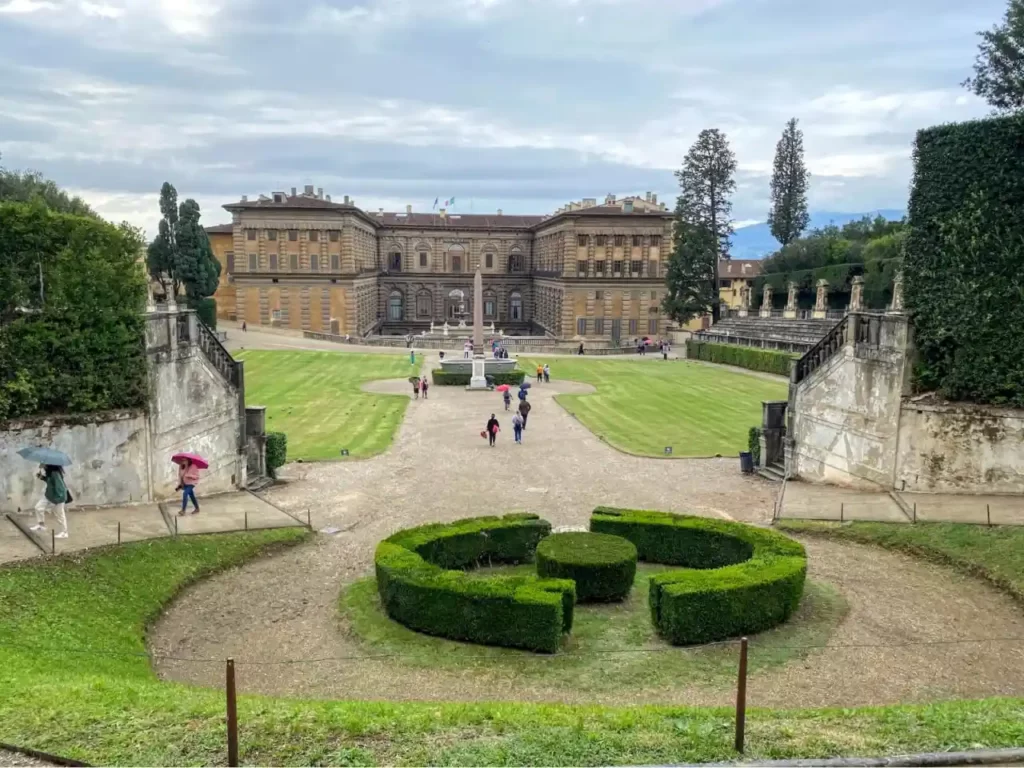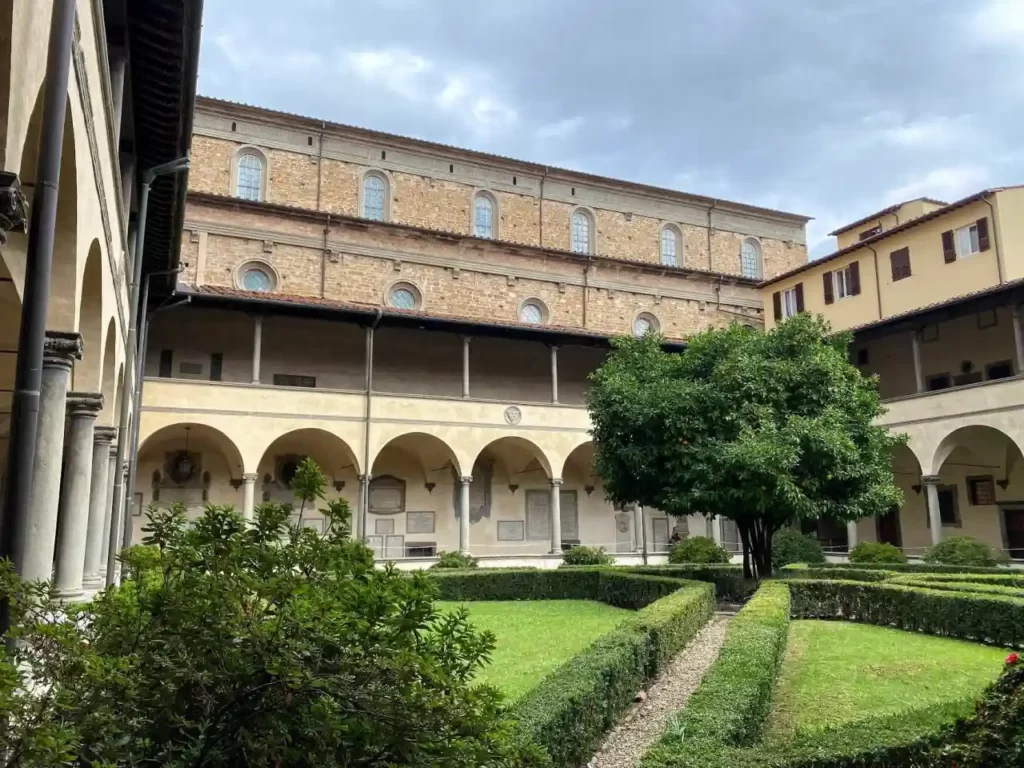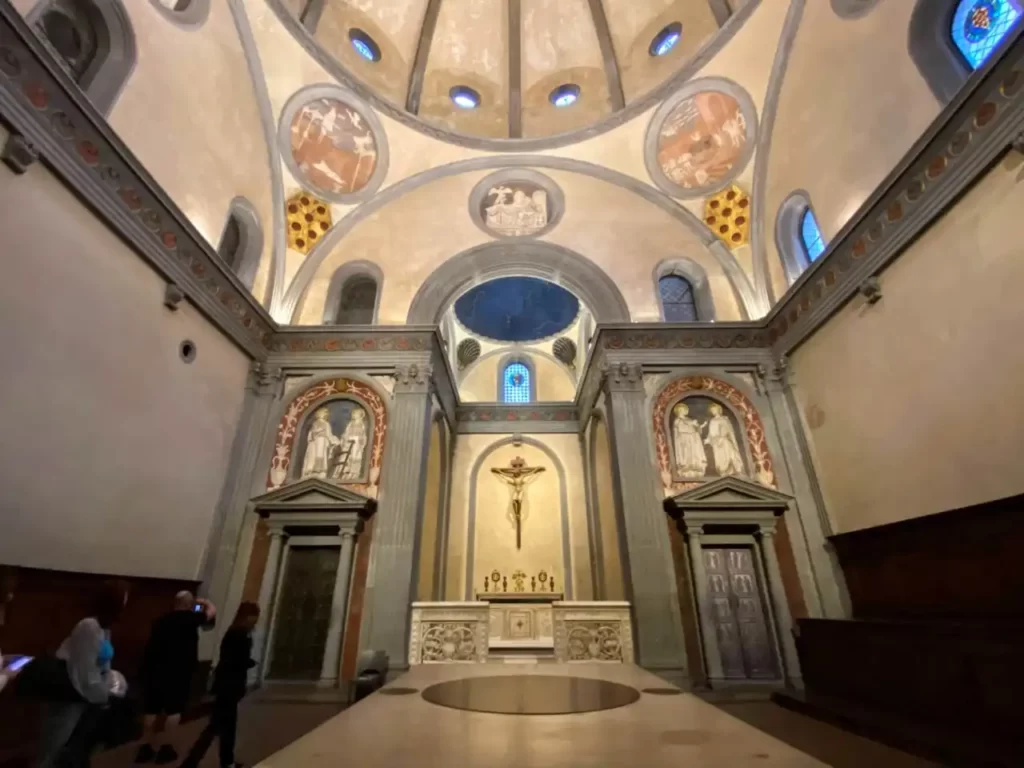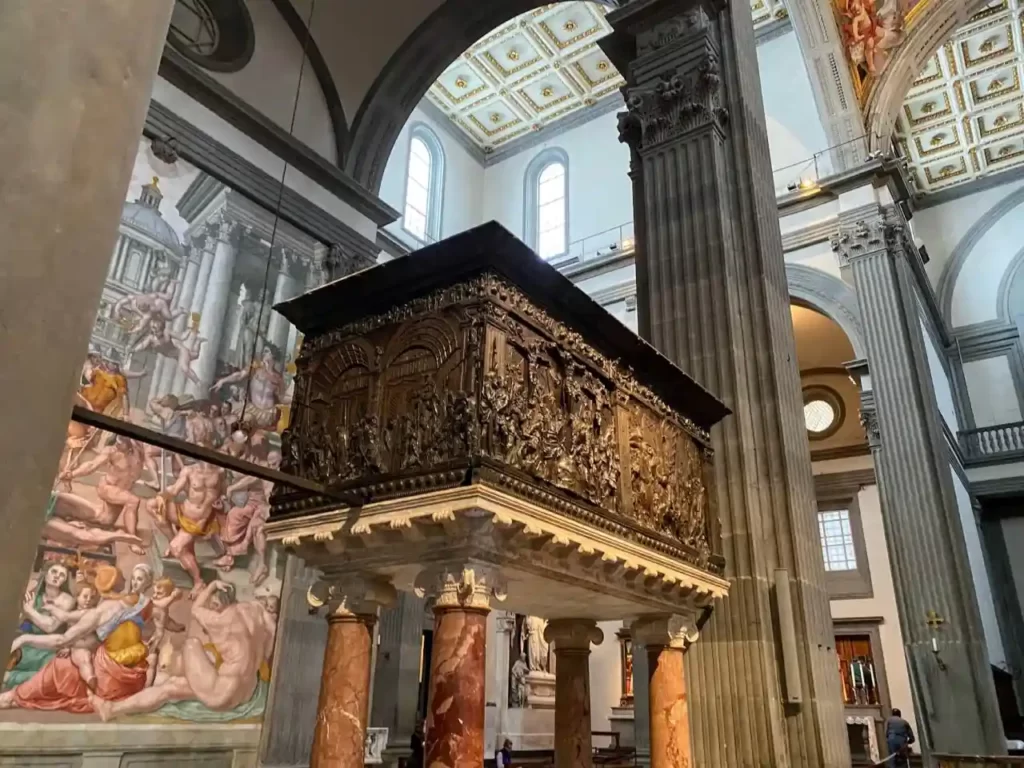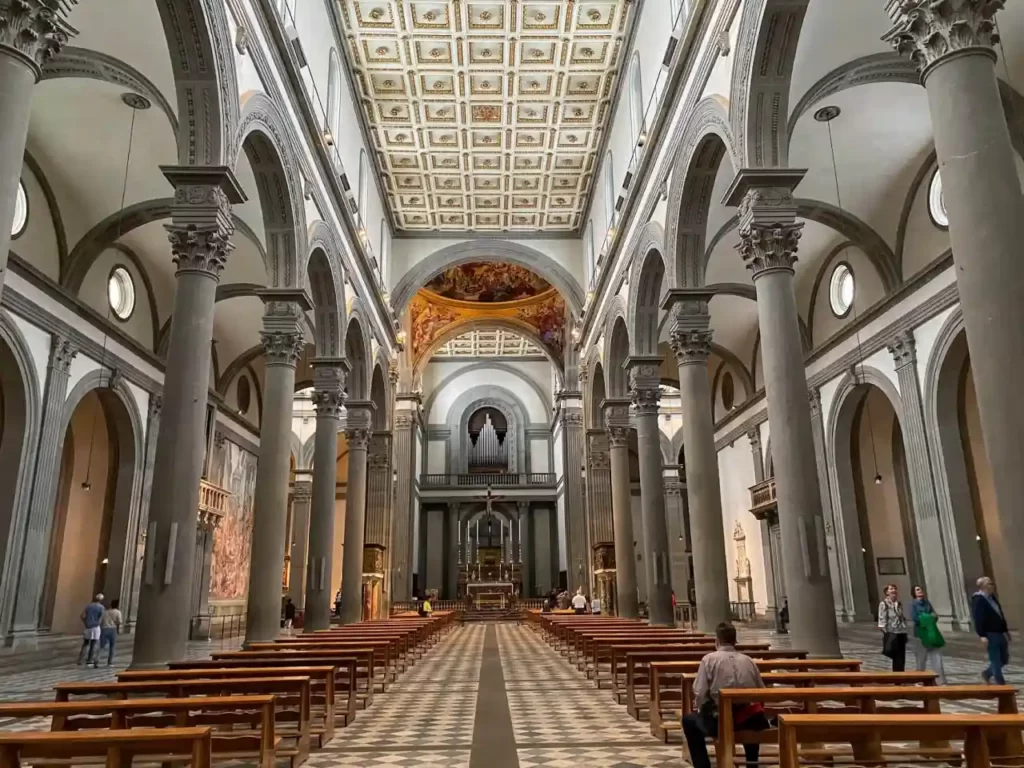Florence is the capital of the Italian Renaissance and home to numerous fantastic masterpieces of architecture. So many talented artists like Dante Alighieri, Leonardo da Vinci, Michelangelo or Filippo Brunelleschi lived and worked there. Its museums and churches are treasuring world-class artworks. With so many things to see in Florence, here are ten cultural spots to visit in Florence.
10 Cultural spots to visit in Florence
This post contains some affiliate links.
1 – Florence Cathedral
Florence Cathedral is one of the most beautiful churches in the world and absolutely a Florence highlight that shouldn’t be missed. Its construction started in 1296 in the Gothic style. The cathedral was finished some 150 years later. The church was made by Arnolfo di Cambio’s design, who also made Santa Croce Church and Palazzo Vecchio.
It’s the most famous today because of its dome, designed by a renowned Renaissance architect Filippo Brunelleschi. It was an architectural masterpiece and, still, the largest brick dome ever built.
The cathedral complex consists of the baptistery and a tower built by another famous Renaissance master, Giotto. You can climb the tower and enjoy the view of Florence from there. Baptistery could also be visited. However, if you decide not to go inside, be sure to take a look at a pair of bronze doors from the outside made by Lorenzo Ghiberti in 1401.
Both Giotto and Filippo Brunelleschi are buried in the church. The whole cathedral complex is listed as a UNESCO World Heritage Site today.
⤷ TIP for visiting: The cathedral is free of charge to visit. However, it could get quite busy in front of it. So, come early in the morning to beat the crowds.
2 – Uffizi Gallery
The Ufizzi is one of the most famous museums in Europe and a place where you can see some of the well-known masterpieces of the Italian Renaissance. The museum was founded when the wealthy Medici family, who were art patrons for centuries, gave their art collection to the City of Florence. It was opened to the public in 1765, making it one of the oldest museums in the world.
Sandro Botticelli’s paintings like ‘Primavera’, ‘The birth of Venus’ and ‘Adoration of the Magi of 1475’ are some of its most famous artworks. The museum is also home to Michelangelo’s ‘The Holy Family (Doni Tondo)’, Leonardo da Vinci’s ‘The Annunciation’ and ‘Adoration of the Magi’, Titian’s ‘Venus of Urbino’, Caravaggio’s ‘Medusa’ and many more world-class masterpieces.
⤷ TIP for visiting: Uffizi Gallery is the most visited museum in Italy. Waiting to get in during the high season could last for hours. Plan your visit during the late autumn, winter or spring months. And buying your online ticket in advance – here is the link to purchase the Uffizi Gallery online tickets.
3 – Ponte Vecchio
Located just a few steps away is another unmissable cultural spot in Florence. Ponte Vecchio is one of the symbols of Florence. It’s a medieval bridge crossing the Arno River. Although not the only bridge in the town, it’s famous for its small shops (here mostly selling jewellery), which were quite common on bridges in the past.
Ponte Vecchio means the old bridge, but this one isn’t the oldest edifice standing on that spot. The oldest wooden bridge stood here, probably back in Roman times.
⤷ TIP for visiting: The bridge is always busy with people. However, it’s still a somehow romantic and poetic place to be. While in Florence, I would use any chance to cross the river over Ponte Vecchio.
4 – Santa Croce
If you visit only one church in Florence, make it Santa Croce. It was my favourite Florence church, filled with fantastic art pieces, incredible architecture and decorative details. The church is also home to the graves of famous people like Michelangelo, Galileo Galilei, Lorenzo Ghiberti and Machiavelli.
Santa Croce is the largest Franciscan basilica in the world. While visiting it, I had an impression as it was equally celebrating God and men. Giotto’s frescoes from the Life of Saint Francis, located in the Bardi Chapel, are among the most famous frescoes you’ll find inside.
A part of the church is the museum with a great art collection and Capella dei Pazzi designed by Filippo Brunelleschi.
⤷ TIP for visiting: As in many Italian churches, you’ll get a booklet with a church map and the most notable artworks listed. It makes it much easier to explore them that way. The church has an admission fee, and you can purchase your tickets at the entrance (left from the main facade).
5 – Palazzo Strozzi
Florence experienced its Golden Age during the Renaissance time. So still today you’ll find numerous Renaissance buildings around the city centre. The Renaissance palaces built by wealthy Florentine families are especially interesting.
Palazzo Strozzi was built for the family of the same name, the Medici family’s biggest rivals. With the architecture of their house, they wanted to show their power. On it, you can see some of the Renaissance architecture canons like symmetry, rusticated stone and typical bifore windows.
⤷ TIP for visiting: The interior of Palazzo Strozzi is home to many interesting temporary exhibitions. You can get your online tickets here. However, if you’d like to look at the inner courtyard, you can just enter the palace and walk through its ground-floor courtyard free of charge. Usually, some contemporary artworks are displayed there, so you can enjoy exploring them there, too.
6 – Galleria dell’Accademia
Galleria dell’Accademia is another excellent museum in Florence. It has the best collection of Michelangelo’s statues in the world and is worth visiting only for that. The museum is home to a great collection of Italian Renaissance art, but it’s more compact than the Uffizi Gallery.
The museum is best known for being home to Michelangelo’s ‘David’. There, you’ll also find his four slaves statues and a ‘Pieta’. I also enjoyed exploring their lovely collection of Florentine paintings made between 1300 and 1600. Among the highlights is also Giambologna’s ‘Rape of the Sabine Women’.
⤷ TIP for visiting: If you’re not that much into Renaissance art but would love to see some of its highlights, I suggest you visit Galleria dell’Accademia instead of the Uffizi Gallery. However, remember it’s the second most-visited museum in Italy, so be sure to buy your ticket online in advance (here is the link).
7 – Mercato Centrale Florence
One of the best cultural spots to visit in Florence is undoubtedly its central market. It’s a vibrant place where you can try delicious Italian dishes of excellent quality for a reasonable price. I had lunch there almost every day during my stay in Florence. From pasta, vegetarian food and some great desserts, you’ll find a great variety of Italian food there.
It’s also an excellent place to buy some edible souvenirs. You’ll also find wine, pasta, spices and cheese shops there. If you’d like to explore Italian gastronomy, visit this fantastic place.
⤷ TIP for visiting: My advice for visiting these kinds of places is to walk around all the small stands first and see where the locals buy their food. Everybody speaks English there, so you don’t have to worry about the language barrier. And I could pay with a credit card everywhere I ate or bought some food.
8 – Palazzo Vecchio
Italian cities have some of the most beautiful city halls in Europe, and Florence is no exception. Palazzo Vecchio has a fascinating design, but it’s also home to a fantastic museum, which I recommend visiting. Its construction started in 1299.
Michelangelo’s ‘David’ originally stood in front of it. However, it was later moved to the Galleria dell’Accademia museum. Today, you’ll find the replica in front of the Palazzo Vecchio. Next to it is the entrance to a small courtyard designed by one of the most famous Renaissance architects, Michelozzo. Inside, Giorgio Vasari created frescoes depicting Austrian towns.
The interior of the city hall is turned into a museum in which you can see some beautiful frescoes, artworks and the palace interior. Among them, the most fascinating are Salone dei Cinquecento, painted by Giorgio Vasari (although both Leonardo da Vinci and Michelangelo Buonarroti worked there, too) and Apartments of Eleonora of Toledo with the chapel painted by Bronzino.
⤷ TIP for visiting: You can see the small courtyard of Palazzo Vecchio free of charge. However, I recommend you visit the museum inside it, too. Here is the link on which you can purchase your online ticket. On the right from the entrance to the museum, you’ll find a public water fountain with two pipes from which you can get still or sparkling water. I loved it so much I would pass by there a few times each day to refill my water bottle.
9 – Palazzo Pitti & Boboli Gardens
Palazzo Pitti was built in the mid-15th century and bought in the first half of the 16th century by the Medici family. It soon became their principal residence in Florence. The palace is the largest museum in Florence today and home to many artworks made by Raphael, Titian and other mostly Italian artists.
Boboli Gardens are located behind the palace and could be visited separately. They are a great example of typical Italian gardens from the 16th century. Among the different kinds of trees, Boboli Gardens are filled with numerous statues, fountains and caves.
⤷ TIP for visiting: You can see these places together or separately. You’ll need to purchase the ticket to both of them or each of these sites individually. Here is the link on which you can check the tickets options.
10 – Basilica di San Lorenzo
Basilica di San Lorenzo in Florence is closely linked to the city’s most famous rulers, the Medici family. It was their parish church and a burial place for numerous family members. The church was designed by Filippo Brunelleschi and Michelangelo. It’s home to many paintings made by prominent Renaissance painters. Some of the most famous artworks are two pulpits, the last work of Donatello.
Within the basilica’s complex, you can also visit the museum, which hosts some interesting temporary exhibitions. During my visit, they had a fantastic exhibition about the science development during Renaissance.
⤷ TIP for visiting: When buying your entrance ticket, you can choose which parts of the church you would like to see. The museum is excellent, so if you have enough time, be sure to visit it. Capella Medici’s entrance is on the opposite side of the church.
With so many interesting cultural spots to visit in Florence, you can spend weeks, if not months, in that beautiful Italian town. Have you been to Florence? Would you add any art highlights in Florence to this list? Let me know in the comments!
This post contains some affiliate links
Cover photo by Jeff Ackley on Unsplash

